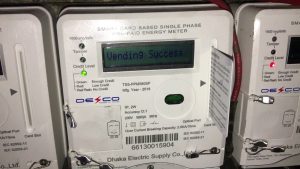Bangladesh economic growth is expected to go up slightly in the current fiscal year, due to strong domestic demand backed by better exports and remittances, says Asian Development Bank (ADB) yesterday.
The bank in its latest outlook update for Asian countries, published yesterday, forecast that GDP growth is projected to further accelerate at 6.7 per cent, as both exports and remittances—the two main growth drivers, are expected to perform better in FY16 than in FY15.The projection is lower than the government’s 7 per cent forecast for FY16, made in its fiscal policy. The ADB’s forecast is, however, higher than the World Bank’s pessimistic 6.3 per cent for FY16.
“Strong domestic demand and exports have boosted our outlook for 2016 of Bangladesh economy,” said ADB Country Director for Bangladesh Kazuhiko Higuchi while releasing the report.
“For FY2016, GDP growth is projected to further accelerate at 6.7 per cent. Both exports and remittances—the two main growth drivers, are expected to perform better than in FY2015,” he said.
Domestic demand will make a significant contribution, driven mainly by strong expansion in remittances that will boost consumption demand and prospects of picking up investment under the stable business climate, he said.
Bangladesh’s GDP growth in the last fiscal year was 6.5 per cent, beating ADP forecast of 6.1 per cent.
The ADP report said export growth in FY16 is projected to improve to 6 per cent as economic growth in the euro area and the US strengthens.
Imports are also projected to increase by 13 per cent, mainly in capital goods, industrial raw materials, and food grains.
Remittance inflows are likely to grow by 9 per cent as the government steps up efforts to place workers overseas.
Despite higher growth in remittances, the trade deficit will likely mean a current account deficit equal to 5 per cent of GDP in FY16.
Higuchi said garments sector remains important sector for the Bangladeshi economy. “At the moment, the country is looking for new export markets and despite GSP suspension by the US, the RMG sector has further potential to grow.”
However, the ADB several risks like infrastructure constraints and revenue deficit could derail the projections.
Political stability is essential to gain the confidence of investors and consumers like, maintain macroeconomic stability, and achieve higher economic growth, it noted.
It said failure to attain the revenue target without matching expenditure adjustments would create inflationary pressure as the government borrowed from banks, and so undermine macroeconomic stability.
Likewise, inadequate foreign investments would limit spending through the development plan on infrastructure , and thereby curtail growth.
ADB principal country specialist Mohammed Parvez Imdad said inflation is expected to decline to 6.2 per cent in FY16 from 6.4 per cent in previous fiscal with the expected cautious monetary policy stance taken by Bangladesh Bank and a better crop outlook.
About the GDP growth projection, he said, “Continued efforts for resource mobilisation, structural reforms and infrastructure upgradation will support higher growth.”
He supported recent pay-scale hike for public servants, saying inflation was adjusted with national income. He said inflation is needed to control for sustainable growth.
Growth in agriculture is forecast to accelerate to 3.2 per cent if normal weather prevails and prices remain favourable, according to the ADB report.
Industry growth is also expected to strengthen modestly to 9.8 per cent with better performance in RMG, manufacturing for the domestic market and construction.
Growth in services is projected to edge up 6 per cent as agriculture and industry expand. – Staff Reporter




